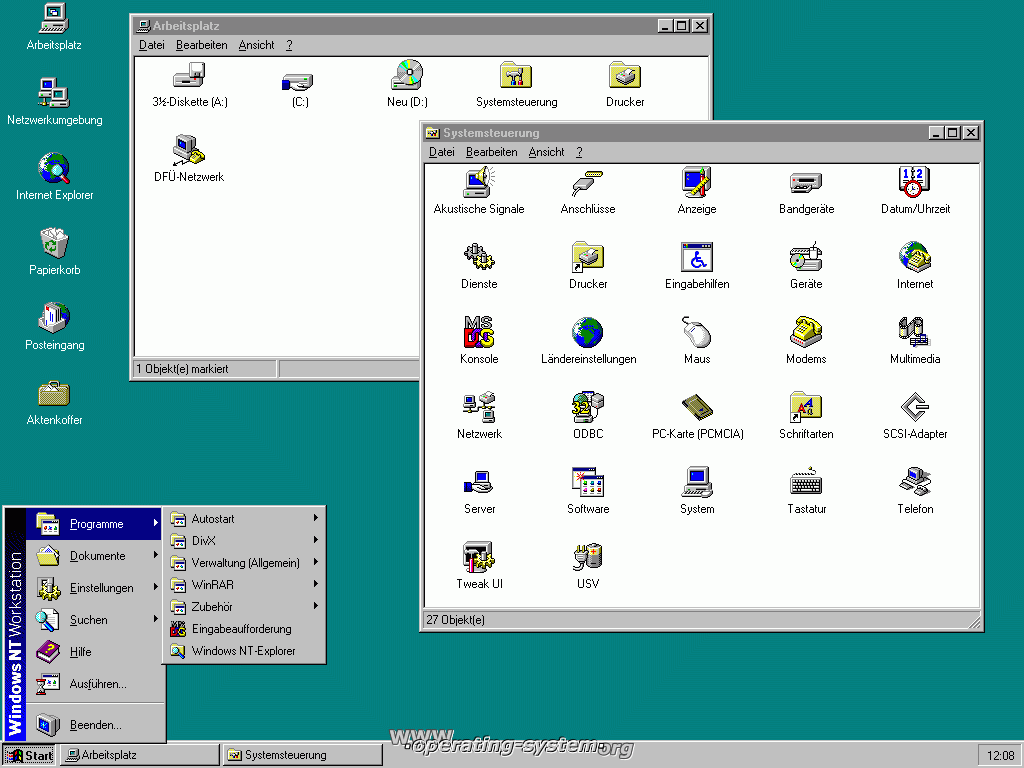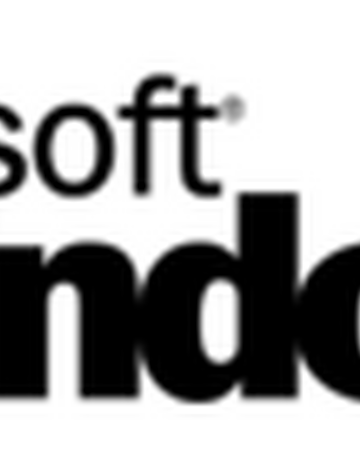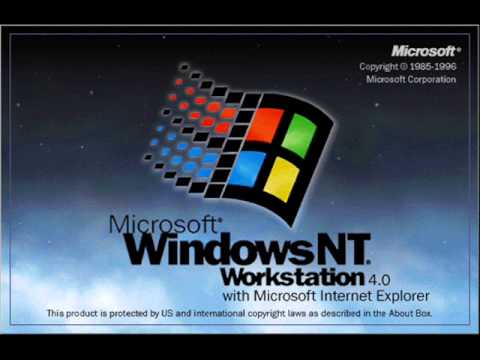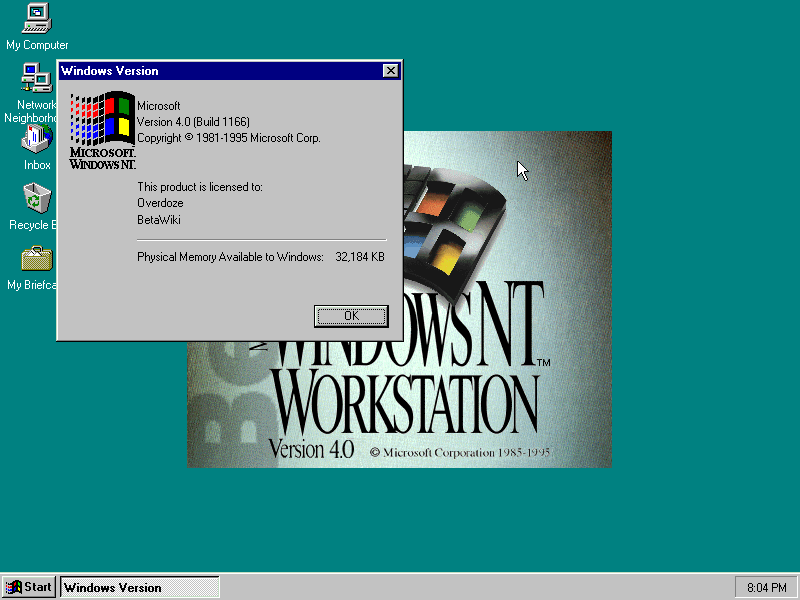- Windows Nt 4.0
- Windows NT 4.0 : Microsoft : Free Download, Borrow, And ...
- Windows NT 4.0 - Wikipedia
- Cached
- Windows Nt 4.0 Resource Kit
| Windows NT 4.0 | |
|---|---|
| A screenshot of Windows NT Workstation 4.0 SP6, showing the Start menu and Windows Explorer | |
| Developer | |
| Microsoft | |
| Website | http://www.microsoft.com/ ntworkstation/default.asp (Defunct) |
| Releases | |
| Initial release | 31 July 1996; 25 years ago[1][source?] |
| Stable release | 4.0 SP6a (Build 1381) (24 August 1996; 24 years ago[2])[source?] |
| Source model | Closed source |
| License | |
| Kernel type | Hybrid |
| Platform support | IA-32, Alpha, MIPS, PowerPC |
| Preceded by | Windows NT 3.51 (1995) |
| Succeeded by | Windows 2000 (1999) |
| Support status | |
| Embedded | Mainstream support ended on 30 June 2003[3] Extended support ended on 11 July 2006[3] |
| Server | Mainstream support ended on 31 December 2002[4] Extended support ended on 31 December 2004[4] |
| Workstation | Mainstream support ended on 30 June 2002[5] Extended support ended on 30 June 2004[5] |
Jul 31, 1996 Here is an ISO I have extracted from a CD of Windows NT Workstation 4.0. I have a key and instructions on installing with VirtualBox (It was a pain to write and nowhere as easy as making a video about it.) enjoy! Windows NT 4.0 Embedded is a componentized version of Windows NT 4.0 Workstation intended for use in embedded units. It was released on 30 August 1999. Unlike any other installation of Windows, which you would install by booting into its installation media and then simply setting it up, Windows NT 4. In Server space, NT 4.0 was just as significant as Windows 3.0 was on the desktop. You now had servers that normal people could interact with. It was amazing in IT all the VMS, Netware, OS/2, and Unix systems that we're dumped in favor of running Windows NT 4.0. Windows Server 2008 R2 and later do not support trust relationships with Windows NT 4.0 even when using the NT4Crypto setting. This limitation includes but is not limited to the following secure channel operations: - Establishing and maintaining trust relationships - Domain Join - Domain authentication - SMB sessions.
Windows NT 4.0 is a preemptively multitasked[6]graphicaloperating system, designed to work with either uniprocessor or symmetric multi-processor computers. It was part of Microsoft's Windows NT family of operating systems and was released to manufacturing on 31 July 1996.[1] It is a 32-bit operating system available in both workstation and server editions with a graphical environment similar to that of Windows 95. It was officialy released on August 24, 1996, approximately a year after Windows 95.
Overview[change | change source]
The successor to Windows NT 3.51, Windows NT 4.0 introduced the user interface of Windows 95 to the Windows NT family, including the Windows shell, File Explorer (known as Windows NT Explorer at the time), and the use of 'My' nomenclature for shell folders (e.g. My Computer). It also includes most components introduced with Windows 95. Internally, Windows NT 4.0 was known as the Shell Update Release (SUR).[7] While many administrative tools, notably User Manager for Domains, Server Manager and Domain Name Service Manager still used the old graphical user interfaces, the Start menu in Windows NT 4.0 separated the per-user shortcuts and folders from the shared shortcuts and folders by a separator line.[8] Windows NT 4.0 includes some enhancements from Microsoft Plus! for Windows 95 such as the Space Cadet pinball table, font smoothing, showing window contents while dragging, high-color icons and stretching the wallpaper to fit the screen. Windows Desktop Update could also be installed on Windows NT 4.0 to update the shell version and install Task Scheduler.[9] Windows NT 4.0 Resource Kit included the Desktop Themes utility.[10]
Windows NT 4.0 is the last major release of Microsoft Windows to support the Alpha, MIPS or PowerPC CPU architectures. It remained in use by businesses for a number of years, despite Microsoft's many efforts to get customers to upgrade to Windows 2000 and newer versions. It was also the last release in the Windows NT family to be branded as Windows NT although Windows 2000 carried the designation 'Built on NT Technology'.
Editions[change | change source]
Windows NT 4.0 Server was included in versions 4.0 and 4.5 of BackOffice Small Business Server suite.
Client[change | change source]
- Windows NT 4.0 Workstation was designed for use as the general business desktop operating system.
Servers[change | change source]
- Windows NT 4.0 Server, released in 1996, was designed for small-scale business server systems.
- Windows NT 4.0 Server, Enterprise Edition, released in 1997, is the precursor to the Enterprise line of the Windows server family (Advanced Server in Windows 2000). Enterprise Server was designed for high-demand, high-traffic networks. Windows NT 4.0 Server, Enterprise Edition includes Service Pack 3.[11] The Enterprise Edition saw the introduction of the /3GB boot flag, which changed the default virtual address space mapping from 2 GB kernel and 2 GB userland to 1 GB kernel and 3 GB userland. It also introduced a PSE36 driver for mapping up to 64 GB memory (although chipsets of the era supported only up to 8 GB.)[12] This version also sees the first introduction of cluster service.
- Windows NT 4.0 Terminal Server Edition, released in 1998, allows the users to log on remotely. The same functionality was called Terminal Services in Windows 2000 and later server releases, and also powers the Remote Desktop feature that first appeared in Windows XP.
Embedded[change | change source]
- Windows NT 4.0 Embedded (abbreviated NTe) is an edition of Windows NT 4.0 that was aimed at computer-powered major appliances, vending machines, ATMs and other devices that cannot be considered general-purpose computers per se. It is the same system as the standard Windows NT 4.0, but it comes packaged in a database of components and dependencies, from which a developer can choose individual components to build customized setup CDs and hard diskbootimages. Windows NT 4.0 Embedded includes Service Pack 5. It was succeeded by Windows XP Embedded.
References[change | change source]
- ↑ 1.01.1'Microsoft Announces the Release of Windows NT Workstation 4.0'. News Center. Redmond, WA: Microsoft. 31 July 1996.
- ↑'Post-Windows NT 4.0 Service Pack 6a Security Rollup Package (SRP)'. Support. Microsoft. 19 June 2014.
- ↑ 3.03.1'Microsoft Support Lifecycle for Windows NT Embedded 4.0'. Microsoft. Retrieved 3 February 2015.
- ↑ 4.04.1'Microsoft Support Lifecycle for Windows NT 4.0 Server'. Microsoft. Retrieved 4 September 2009.
- ↑ 5.05.1'Microsoft Support Lifecycle for Windows NT 4.0 Workstation'. Microsoft. Retrieved 4 September 2009.
- ↑Donald McLaughlin and Partha Dasgupta (4 August 1998). 'Distributed Preemptive Scheduling on Windows NT'. 2nd USENIX Windows NT Symposium. USENIX. Retrieved 4 September 2009.
- ↑'Poking Around Under the Hood: A Programmer's View of Windows NT 4.0'. microsoft.com. Microsoft.
- ↑'Windows 2000 Professional Beta 3 Review'. winsupersite.com. Archived from the original on 2011-12-06. Retrieved 2018-03-20.
- ↑'The New Task Scheduler (Windows 95 and Windows NT 4.0)'. microsoft.com. Microsoft.
- ↑'NT 4.0 RESOURCE KIT UTILITIES Corrections and Comments'. microsoft.com. Microsoft.
- ↑'Windows NT Server, Enterprise Edition Administrator's Guide and Release Notes'. microsoft.com. Microsoft.
- ↑Tuning IBM xSeries Servers for Performance(PDF) (3rd ed.). IBM SG24-5287-02. June 2002. pp. 92–93.
| Preceded by Windows 95 | Windows Versions 1996-1998 | Succeeded by Windows 98 |

Windows NT 4.0 Workstation
The operating system Windows New Technology in the current version 4.0 of July 1996 was developed further considerably to the predecessor NT 3.51. The user interface of Windows 95 was united and revised with the stability and accuracy of Windows NT and integrated into this new version. The complete graphic engine, user, GDI and graphic driver software were transferred by the user mode into the kernel mode. Through this an improvement in the performance has happen opposite the earlier versions. Standards from the UNIX world like TCP/IP protocols and Posix Guidelines are also includet. Windows NT does not allow direct access to the hardware and controls all accesses. Only with special graphics boards and specified driver software approximately the overlay mode is possible for the faster playback of videos.Windows NT is availably in a Server Edition (up to 4 CPUs) in a Workstation Version (up to 2 CPUs) and Enterprise Server Edition (up to 8 CPUs). There in addition are the Windows NT Server 4.0 Terminal Edition. The Registry is fully responsible for the user settings, system configuration, hardware and software settings and others. Other configuration files plays only a minor roll opposite to previous NT versions and of course Windows 9x. The Registry is therefore far bigger. The files used for the Registry are NTUSER.DAT from the respective user directory, default (standard user profile), system (hardware configuration), software (installed programs), Security (control of the access list) and Sam (user account and passwords), in the directory 'C:/Winnt/system32/config/'.
Windows Nt 4.0
Minimum Requirements:
- 486 CPU or RISC-based CPU, such as Alpha, MIPS or PowerPC
- 16 MB RAM
- 110 MB free hard disk space
- VGA or SVGA compatible graphics card
- CD-ROM drive

Update: August, 23. 1997 With the Internet Explorer 4.0 the Active Desktop is offered as an extension for the installation. It is possible with that to act like in a browser in the Windows Explorer and the desktop can display web objects. The start bar is extended by the integration of own tool bars for the quick start. The user interface looks through this more modern like in Windows 98.
Update: August, 07. 1998 Last DirectX release in the version 6.0 for Windows NT. Direct3D and DirectSound are supported only emulated.
Update: November, 19. 1999 With the 35 mbyte great Service Pack 6.0 Windows NT 4.0 is taken to the newest stand. All bug fixes were integrated in relation with the turn of the year 2000, euro currency support and security updates. The NTFS driver software was revised and supports now except for EFS and Quotas, NTFS 5.0 harddisk storages from Windows 2000. There are no updates for the MDAC and Internet Explorer includet.
Update: July, 26. 2001 The 14.5 mbyte great and last Security Rollup Package (SRP) is published. All Patches are contained that was released since the Service Pack 6a.
Area of application
- Network Client
 - Server
- Server - Office use for office programs
Windows NT 4.0 : Microsoft : Free Download, Borrow, And ...
Structure informations- Microkernel
- Platforms: Intel x86, Alpha, on MIPS and PowerPC only very little common
- multi-processor capable (up to 4 CPUs)
Windows NT 4.0 - Wikipedia
- good port to other platforms by a changed HALSystem environment
- Time-Sharing system
- File systems: NTFS, FAT-16
- Protocols: NetBEUI, TCP/IP, IPX/SPX, DLC, AppleTalk
Features
Cached
- stable system- Systemlog for events
- High performance at Office applications
- High security with current Service Packs
- bad integration of newest hardware
- no Plug and Play
- no ACPI or direct USB support

30th June 2003: Windows NT 4.0 Support has ended
Phone support that may charged on an hourly base and extended, limited hotfix support has ended.
Screenshots
| Windows NT 4.0 - Windows NT setup | Select or prepare a destination partition | Formatting of the partition in NTFS is recommended | Copying process of the system files |
| Base settings of the computer | Setup assistant | 4.0 - Create emergency floppy disk for Recovery | Define program selection |
| Network Configuration | Playback of Videos | Internet Explorer 2.0 | Startmenu, Workplace and system control |
| Services of the computer | File explorer and task manager | System registration and network configuration | View of web sites in the Internet Explorer |
| Access to shared files in the network | Assignment of file and folder rights | User managers, logging function, harddisk manager and memory allocation | User manager in detail |
| Logging in the detail | System configuration of .ini files (only to the compatibility) | Screen for logon | Windows NT 4.0 Structure |
Windows Nt 4.0 Resource Kit
1997 May - Service Pack 3
1998 Oct. - Service Pack 4
1999 Nov. - Service Pack 6
2001 July - Security Rollup Package (SRP)
2003 June - Windows NT 4.0 Support terminated